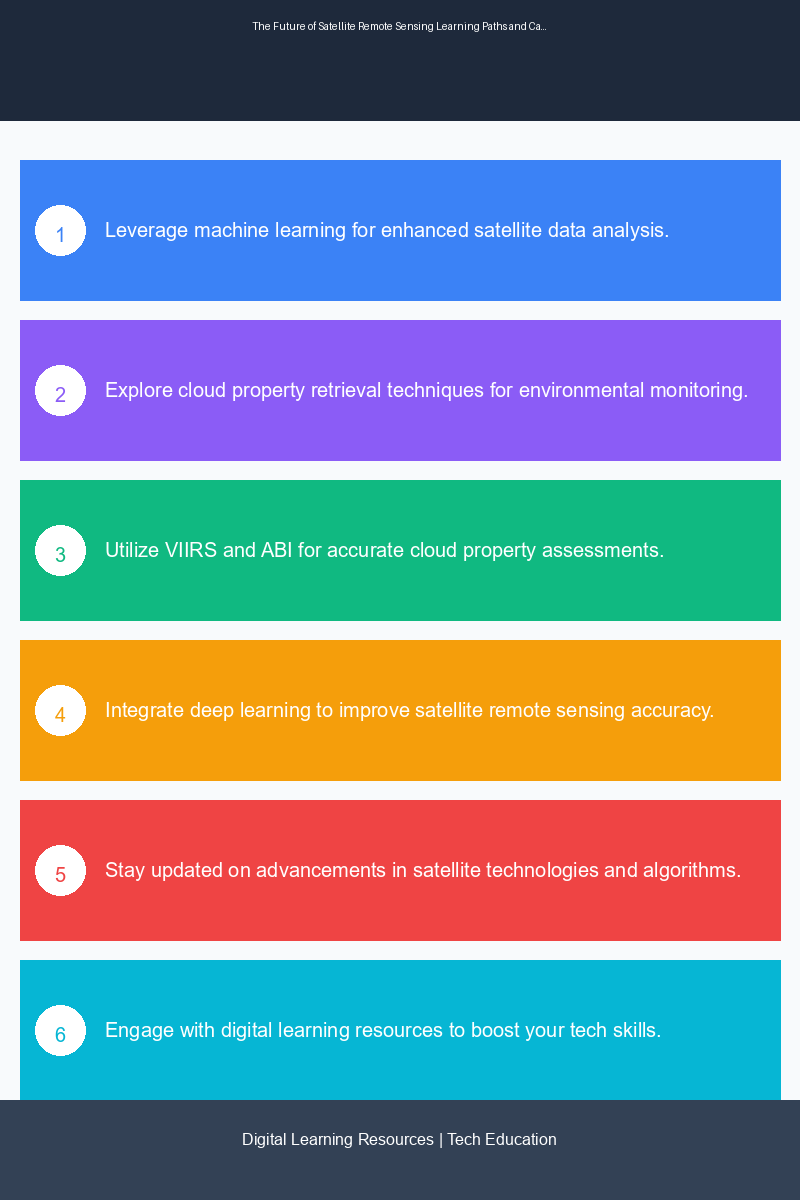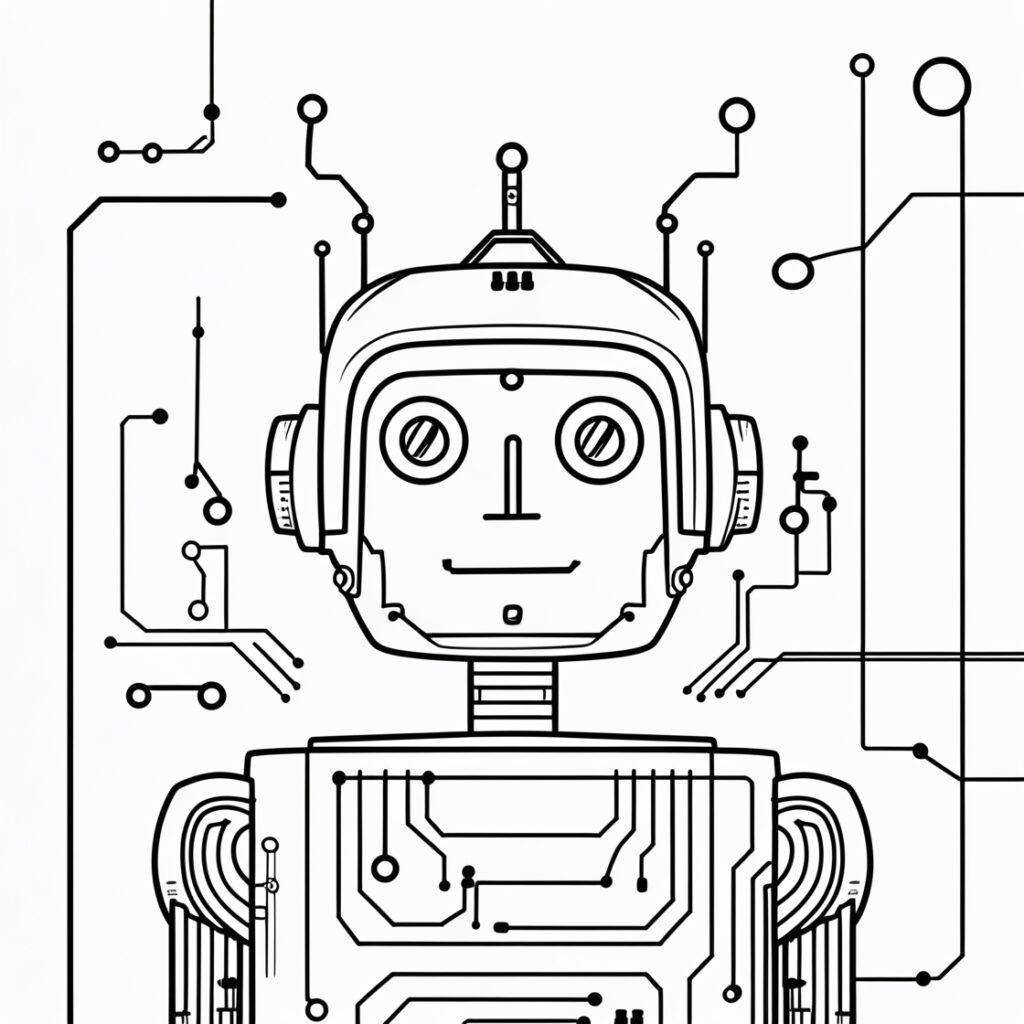Key Takeaways:
Explore the fusion of cloud computing and satellite technologies for advanced environmental monitoring. Learn how to leverage machine learning and deep learning in satellite remote sensing while enhancing your skills for a future in this rapidly evolving field.
Introduction
As technology continues to advance, satellite remote sensing has emerged as a pivotal field in environmental science. The integration of cloud property retrieval techniques utilizing machine learning (ML) and deep learning (DL) is transforming how we analyze atmospheric data. This blog post delves into the technical concepts, practical applications, and learning paths that can empower tech professionals and learners to thrive in this dynamic landscape.
Technical Background and Context
Satellite remote sensing involves collecting and interpreting data from satellite sensors to monitor and analyze various Earth properties, including clouds. The Visible Infrared Imaging Radiometer Suite (VIIRS) and Advanced Baseline Imager (ABI) are two critical instruments used in cloud property analysis. They differ significantly from active sensors, such as CALIPSO and CloudSat, which emit signals to gather information.
📚 Recommended Digital Learning Resources
Take your skills to the next level with these curated digital products:
AI Enhanced Resume Builder
AI Resume Builder Flask App – Complete Source Code + PDF Tutorial + HTML | Digital Download for Designers
Learn AWS: Your First Cloud Application
Learn AWS: Your First Cloud Application
📊 Key Learning Points Infographic

Visual summary of key concepts and actionable insights
Comprehensive SAT Prep: 470+ Vocabulary Words
Comprehensive SAT Prep: 470+ Vocabulary Words
Master DevOps in Practice – 50 Essential Topics for Engineers (PDF eBook)
Master DevOps in Practice – 50 Essential Topics for Engineers (PDF eBook)
The Ultimate Keyboard Shortcut Guide 49 Software Cheat Sheets in One PDF Bundle
The Ultimate Keyboard Shortcut Guide 49 Software Cheat Sheets in One PDF Bundle
Machine learning and deep learning algorithms have become essential in satellite remote sensing applications, enabling the generation of high-quality training datasets. These datasets are created through complementary retrievals from both active and passive sensors, enhancing the accuracy of cloud property retrievals. Furthermore, 3D radiative transfer (RT) simulation techniques are employed to refine these retrievals by considering the complex interactions of light in the atmosphere.
Practical Applications and Use Cases
Understanding cloud properties is crucial for weather forecasting, climate modeling, and environmental monitoring. Here are some practical applications:
- Weather Prediction: Accurate cloud property retrieval significantly improves forecasting models, leading to more reliable weather predictions.
- Climate Research: Researchers utilize cloud observations to study climate change impacts, helping to drive policy decisions and environmental conservation efforts.
- Agricultural Monitoring: Farmers can benefit from cloud data to optimize irrigation and crop management based on weather patterns.
- Disaster Management: Enhanced cloud monitoring aids in tracking severe weather events, providing critical data for emergency responses.
Learning Path Recommendations
For professionals interested in diving deeper into satellite remote sensing and cloud property retrieval, consider the following learning paths:
- Satellite Remote Sensing Technologies: Enroll in courses that cover the fundamentals of satellite sensors and their applications.
- Machine Learning and Deep Learning: Pursue training focused on ML and DL applications in environmental science to enhance your analytical skills.
- 3D Radiative Transfer Simulations: Learn about RT simulation techniques to improve accuracy in cloud property retrievals.
- Cloud Computing and Big Data Analytics: Participate in workshops that teach the use of cloud computing platforms for processing and analyzing large datasets.
Industry Impact and Career Implications
The integration of machine learning into satellite remote sensing algorithms is a growing trend that emphasizes the need for skilled professionals. NASA’s recent Decadal Survey highlights the increasing focus on cloud observations, further validating the importance of this domain. Career opportunities in this field are expanding, with roles ranging from data scientists to remote sensing analysts.
Professionals equipped with skills in satellite remote sensing, machine learning, and cloud computing will be highly sought after in various sectors, including government agencies, research institutions, and private companies focused on environmental monitoring.
Implementation Tips and Best Practices
To successfully engage in cloud property retrieval using satellite data, consider these implementation tips:
- Familiarize Yourself with Sensor Data: Understand the differences between active and passive sensors and how they collect data.
- Utilize Open-Source Tools: Leverage tools like Python, R, and GIS software for data analysis and modeling.
- Collaborate Across Domains: Engage with experts from various fields to enhance knowledge transfer and application of deep learning methods.
- Stay Updated: Regularly follow industry trends and developments to keep your skills relevant.
Future Trends and Skill Requirements
The future of satellite remote sensing will likely see an increased reliance on advanced algorithms and cloud-based solutions for data processing. Professionals should focus on developing the following skills:
- Machine Learning Expertise: Proficiency in ML and DL frameworks such as TensorFlow and PyTorch will be essential.
- Big Data Technologies: Familiarity with cloud computing platforms (e.g., AWS, Google Cloud) and big data tools (e.g., Hadoop, Spark) is crucial.
- Remote Sensing Knowledge: Understanding satellite sensor technology and data interpretation will set you apart in the job market.
Conclusion with Actionable Next Steps
As the field of satellite remote sensing continues to evolve, seizing educational opportunities and enhancing your skill set is imperative for career advancement. Start by enrolling in relevant courses, participating in workshops, and engaging with professional communities. By building a robust foundation in cloud property retrieval techniques and machine learning applications, you’ll position yourself as a leader in a transformative sector. Embrace the future of technology and make your mark in the world of satellite remote sensing!
Disclaimer: The information in this article has been gathered from various reputed sources in the public domain. While we strive for accuracy, readers are advised to verify information independently and consult with professionals for specific technical implementations.
Ready to advance your tech career? Explore our digital learning resources including programming guides, certification prep materials, and productivity tools designed by industry experts.



